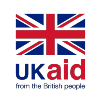This year, to mark World Day Against Child Labour, two members of the Children Advocacy Group (CAG) in Bangladesh featured in a short video. They answered questions about their life, workplace, education and future, highlighting the importance of listening to children’s voices when tackling the issue of child labour.
The objective of the video was to involve children in advocacy and communication activities and for children to understand and learn different communication methods by being actively involved. Since featuring in the video, the children have shown an interest in appearing in more advocacy activities. The idea of participatory video production (PVP) was taken on very enthusiastically by the children.
While selecting children for the PVP, the Bangladesh team decided to feature one boy and one girl in order to showcase the different perspectives. In Bangladesh, most of the girls work at home and are paid by a middleman for the quantity they produce, while boys work in factories, under adult supervision.
Based on the topic and theme, first we prepared a demo script. This was based on discussions with children during the CAG Capacity Building Training in March 2022. We prepared the script in both English and Bangla and shared it with colleagues for feedback.
At the country level, we completed a safeguarding risk assessment on the overall video production plan, focusing especially on ensuring the anonymity of children and making the content safe for children and the community. For example: we decided that, when children are answering questions, their voices will be heard but the visuals would show footage of geographical areas (neighborhoods and informal workplaces) rather than their faces. The children are shown a few times, but they are wearing masks so that they can’t be identified.
Once the procedure had been decided, we went back to the children and asked who was interested in taking part. Following a participatory and consensus process, the children decided which of them will be best to participate in the video. Then, we took consent from the parents/guardians of the selected children.
We included all children in the participatory video production process, and they helped adapt the script, record audio and film background footage. The two children then recorded their stories, and the rest of the CAG gave feedback.
Through taking part in the participatory video, the children have a better understanding of how video can be a powerful tool for sending their messages to a larger stakeholder group. They also came to understand some technical aspects about video production, such as planning, developing messages and script, the benefit of anonymity, speaking clearly, recording and shooting.
After recording the video, the CLARISSA Communications team worked on editing and adding subtitles. The video was released on the 12th of June, on the CLARISSA Twitter account.
On the same day, in a Capacity Building Session of CAG, the video was shown to the children. They were really happy to see themselves in a video that has been released globally. Now, they are more confident about PVP and are showing interest in learning more about video production and being involved in activities such as operating cameras and editing.

